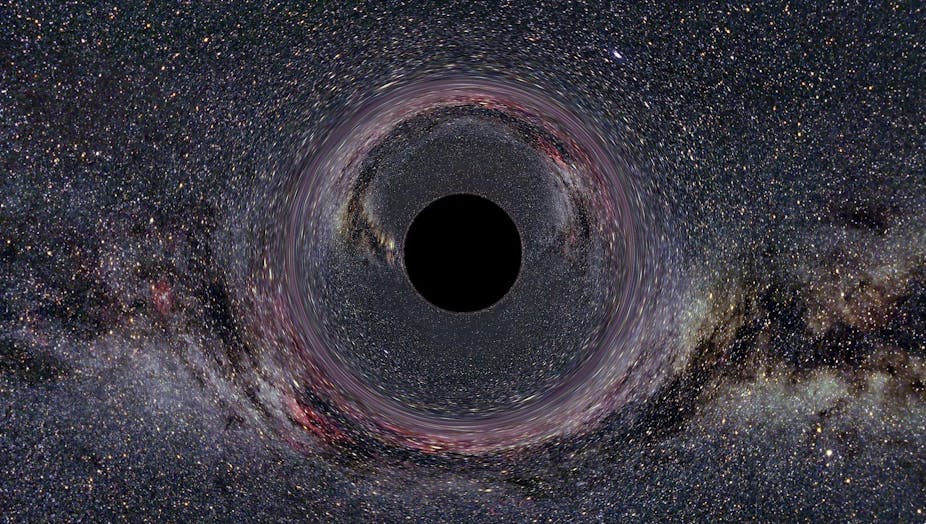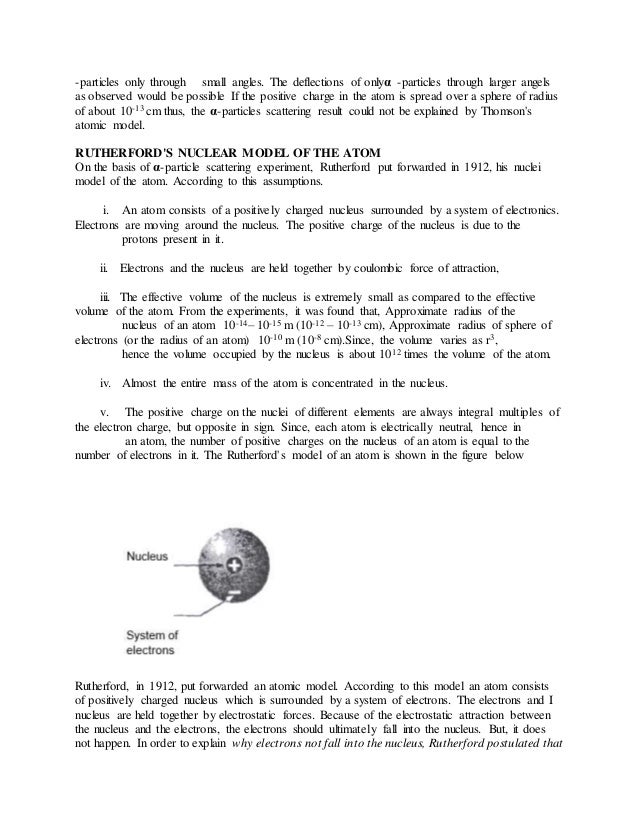Rutherford’s model of atom-i) Every atom consists of a tiny central core, called the atomic nucleus, in which the entire positive charge and almost entire mass of the atom are concentrated. Ii) The size of nucleus is of the order of 10-15, which is very small as compared to the size of the atom which is of the order of 10-10 m. An atom is mostly empty space. Almost all of the mass of the atom is concentrated in the nucleus. The protons and neutrons in the nucleus are very tightly packed. The number of protons and neutrons is always the same in the neutral atom. Almost the entire mass of an atom is in the nucleus A proton or a neutron approximately 1840 times heavier than an electron.So weight of electrons is negleteble. The mass of a nucleus is always less than the sum of the masses of the nucleons present in it. When nucleons combine to form a nucleus, some energy is liberated, and this is the binding energy of the nucleus. The mass of the nucleus cannot be more than the total mass of the nucleons because then stable nucleus cannot be formed.
If both assertion and reason are true and reason is the correct explanation of assertion
BIf both assertion and reason are true but reason is not the correct explanation of assertion
D
If both assertion and reason are false
Solution:
The mass of a nucleus is always less than the sum of the masses of the nucleons present in it. When nucleons combine to form a nucleus, some energy is liberated, and this is the binding energy of the nucleus. The mass of the nucleus cannot be more than the total mass of the nucleons because then stable nucleus cannot be formed
1. A sample of a radioactive element has a mass of $10, g$ at an instant $t = 0$. The approximate mass of this element in the sample left after two mean lives is

2. Given figure shows a plot of binding energy per nucleon $E_{b}$ against the nuclear mass $M. A, B, C, D, E, F$ correspond to different nuclei. Consider four reactions
(i) $A+B to C+varepsilon$
(ii) $C to A+B+varepsilon$
(iii) $D+E to F+varepsilon$
(iv) $F to D +E+varepsilon$
Where $ varepsilon$ is the energy released. In which reactions is $ varepsilon$ positive?
3. The count rate from $100, cm^{3}$ of a radioactive liquid is $c$. Some of this liquid is now discarded. The count rate of the remaining liquid is found to be $c/10$ after three half-lives. The volume of the remaining liquid, in $cm^{3}$, is
4. The variation of decay rate of two radioactive samples $A $and $B$ with time is shown in figure.
Which of the following statements is/are true?
5. Assertion : The whole mass of the atom is concentrated in the nucleus
Reason : The mass of a nucleus can be either less than or more than the sum of the masses of nucleons present in it

6. A sample of radioactive material has mass $m$, decay constant $lambda$, molecular weight $M$ and Avogadro constant $N_{A}$ The initial activity of the sample is
7. Assertion : The radius of a nucleus determined by electron scattering is found to be slightly different from that determined by alpha particle scattering
Reason : Electron scattering senses the charge distribution of the. nucleus whereas alpha and similar particles sense the nuclear matter
Almost The Entire Mass Of An Atom Is Concentrated In The Nucleus
8. Two radioactive substances $A$ and $B$ have decay constants $5lambda$ and $lambda$ respectively. At $t = 0$, they have the same number of nuclei. The ratio of number of nuclei of $A$ to those of $B$ will be $(1/e)^{2}$ after a time interval
9. Assertion : Isotopes of an element can be separated by using a mass spectrometer
Reason : Separation of isotopes is possible because of difference in electron number of isotopes
10. Plutonium decays with half life of $24000$ years. If plutonium is stored for $72000$ years, the fraction of it that remains is
1. The phase difference between displacement and acceleration of a particle in a simple harmonic motion is:
2. A cylinder contains hydrogen gas at pressure of 249 kPa and temperature $27^circ,C$. Its density is :$(R = 8.3,J,mol^{-1}K^{-1}$)
3. The solids which have negative temperature coefficient of resistance are :
4. The energy equivalent of 0.5 g of a substance is:
Almost The Entire Mass Of An Atom Is Concentrated In The
5. The Brewsters angle $i_b$ for an interface should be:
6. Two cylinders A and B of equal capacity are connected to each other via a stop clock. A contains an ideal gas at standard temperature and pressure. B is completely evacuated. The entire system is thermally insulated. The stop cock is suddenly opened. The process is:
7. A screw gauge has least count of 0.01 mm and there are 50 divisions in its circular scale.
The pitch of the screw gauge is:
8. For which one of the following, Bohr model is not valid?
Almost The Entire Mass Of An Atom Is Concentrated In The __

9. A body weighs 72 N on the surface of the earth. What is the gravitational force on it, at a height equal to half the radius of the earth?
10. The refractive index of a particular material is 1.67 for blue light, 1.65 for yellow light and 1.63 for red light. The dispersive power of the material is .........
Why the mass of an atom is found mainly in its nucleus?
1 Answer

Explanation:
The nucleus of an atom consists of protons and neutrons, which have almost identical masses. A proton and a neutron are both assumed to have a mass of
Therefore, the mass of an atom would be mainly the mass of the protons and neutrons, which are found in the nucleus of an atom, so we can say that the mass of an atom is concentrated mainly in the nucleus.
Related questions
